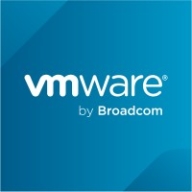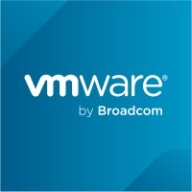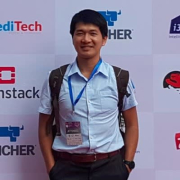

VMware Aria Automation and VMware Tanzu Platform compete in the IT automation and management industry. VMware Aria Automation has the upper hand in centralized log collection and user experience, while VMware Tanzu Platform excels in Kubernetes management and multi-cloud support.
Features: VMware Aria Automation provides centralized log collection, access control through AD groups, and extensible user experiences, making it ideal for blueprint design and automation. VMware Tanzu Platform focuses on efficient Kubernetes cluster management, robust VMware infrastructure integration, and support for multi-cloud environments, catering to modern application development.
Room for Improvement: VMware Aria Automation users report challenges with logging, template management, and documentation, suggesting improvements in vCenter integration and workflow automation support. VMware Tanzu Platform needs better integration with non-VMware clouds, enhanced security, and disaster recovery capabilities.
Ease of Deployment and Customer Service: VMware Aria Automation supports on-premises and private cloud implementations but struggles with hybrid cloud deployments, and although its customer service is well-regarded, some report delays. VMware Tanzu Platform is praised for hybrid and public cloud deployment, but experiences with customer service and support vary, with some facing unresolved issues.
Pricing and ROI: VMware Aria Automation is known for high costs that may deter smaller enterprises, justified by significant workload reductions. VMware Tanzu Platform, despite its expense, is competitively priced with discounts, offering promising ROI through infrastructure agility and faster application delivery, though initial costs may be a barrier for smaller organizations.
| Product | Market Share (%) |
|---|---|
| VMware Aria Automation | 9.4% |
| VMware Tanzu Platform | 1.1% |
| Other | 89.5% |


| Company Size | Count |
|---|---|
| Small Business | 32 |
| Midsize Enterprise | 24 |
| Large Enterprise | 130 |
| Company Size | Count |
|---|---|
| Small Business | 10 |
| Midsize Enterprise | 3 |
| Large Enterprise | 10 |
VMware Aria Automation is a cloud management tool that allows companies to simplify their cloud experience through a modern automation platform. The solution is designed to deliver self-service clouds, multi-cloud automation with governance, and DevOps-based security and infrastructure management. It helps organizations improve IT agility, efficiency, and productivity through its various features.
VMware Aria Automation has multiple use cases that include the following:
VMware Aria Automation Features
VMware Aria Automation has various features that allow users to easily perform operations. Some of the solution's capacities include:
VMware Aria Automation Benefits
VMware Aria Automation offers its users various benefits. Some of the biggest advantages that the solution brings to companies that utilize it include:
Reviews from Real Users
Awais J., CTO/CEO at a tech services company, likes VMware Aria Automation because it saves a lot of time, provides more visibility, and has extensive automation capabilities.
An IT consultant at a government rates VMware Aria Automation highly because the product gives you flexibility to analyze and consume resources.
VMware Tanzu Platform is designed for cloud-native development and management of Kubernetes, CI/CD processes, microservices, and containerized workloads. It supports deployments both on cloud and on-premises, providing centralized management via Mission Control.
VMware Tanzu Platform offers seamless integration with vSphere, ESX, and vSAN, supporting centralized cluster management and lifecycle management. The platform provides a GUI for monitoring CI/CD pipelines and network policies, enhancing multi-tenancy and Day 2 operations. Users can easily manage Kubernetes clusters, monitor applications, and integrate with tools such as GitHub, GitLab, Cloud Foundry, and Azure. It ensures compliance and security for service providers, financial institutions, and businesses.
What are the key features of VMware Tanzu Platform?
What benefits and ROI should users look for in VMware Tanzu Platform reviews?
Industries such as financial institutions, service providers, and businesses requiring rigorous compliance and security deploy VMware Tanzu Platform. These entities benefit from centralized management, streamlined DevOps processes, and integrated tools, enhancing their capabilities in cloud-native developments and containerized workloads.
We monitor all Cloud Management reviews to prevent fraudulent reviews and keep review quality high. We do not post reviews by company employees or direct competitors. We validate each review for authenticity via cross-reference with LinkedIn, and personal follow-up with the reviewer when necessary.